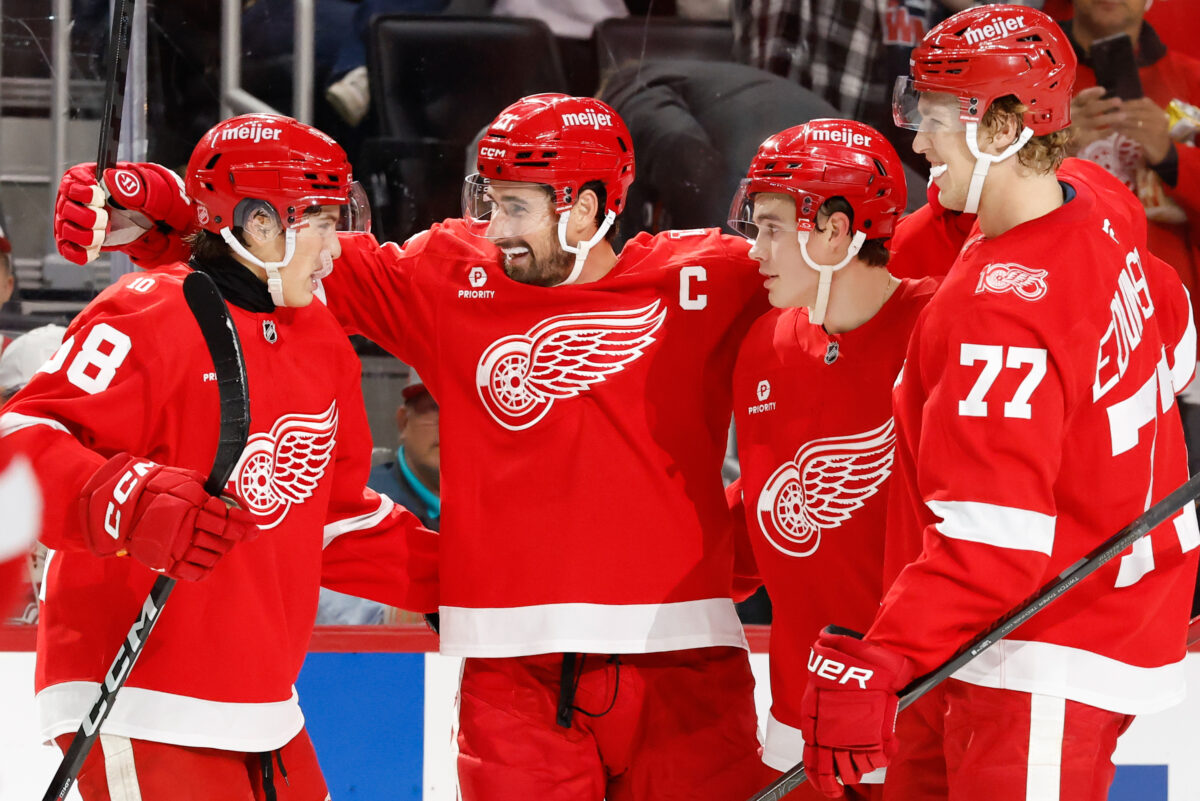After years of steady rebuilding and patient roster development, the Detroit Red Wings have finally found their stride to open the 2025–26 season. With a 5-1-0 record through six games, Detroit sits near the top of the Atlantic Division standings, and this time, it doesn’t feel like an early-season fluke. From improved special teams to balanced scoring and sturdy goaltending, the Red Wings are showing signs of a team ready to contend.
Finding Ways to Win
The Red Wings’ fast start has been built on consistency and resilience. Their 5-1-0 record translates to an .833 points percentage, putting them among the NHL’s early leaders. Detroit’s last three games have all been statement performances, including a 4-1 victory over the Florida Panthers on Oct. 15 without star winger Lucas Raymond. That win highlighted what’s been working for them all season: structured defense, timely scoring, and reliable goaltending.

In that game, Mason Appleton led the charge with two goals, while Patrick Kane and Dylan Larkin continued to anchor the attack. More importantly, Detroit outshot Florida 32–21 and limited a high-powered Panthers offense to very few quality looks. For a team that struggled with defensive lapses in previous years, the difference has been noticeable.
Offensive Depth Leading the Way
One of Detroit’s biggest early-season strengths has been its scoring balance. During their five-game winning streak, the Red Wings outscored opponents 17–9. Rather than relying solely on top-line production, the team is getting contributions from all four lines.
Appleton’s emergence has been a pleasant surprise. His energy and forechecking have added a spark to the middle six. Meanwhile, veterans Patrick Kane and Dylan Larkin continue to provide leadership and scoring touch. Kane, who has three multipoint games already, has shown flashes of his vintage playmaking ability. Rookie forward Emmitt Finnie has also made an impact, earning top-line minutes and showcasing poise beyond his years.
Related: Cam Talbot Emerging as the Red Wings’ Early-Season Starter Over John Gibson
This kind of balanced offense makes Detroit far more unpredictable. In past seasons, if the top line went quiet, the Red Wings struggled to score. Now, with scoring threats spread across the lineup, they’re equipped to generate offense in multiple ways off the rush, on the forecheck, and with improved puck movement on the power play.
Special Teams Showing Real Progress
One of the Red Wings’ biggest weaknesses in 2024–25 was the penalty kill. This season, however, that narrative is changing fast. Detroit’s penalty kill has clicked at 92.3%. The Red Wings have adopted a more aggressive approach, pressuring puck carriers and creating shorthanded chances. This confidence in special teams has given Detroit an edge in tight games, something it lacked in previous seasons.
Defense and Goaltending Delivering Stability
Perhaps the most encouraging sign early on has been Detroit’s defensive composure and goaltending stability. After a tough opening-night loss, head coach Todd McLellan made adjustments, tightening the defensive zone coverage and emphasizing puck management. The results were immediate; the Red Wings have since allowed just four goals over their last three games.
Cam Talbot, who has started the majority of games so far, has been sharp with a 2.21 goals-against average and a .923 save percentage. His steady play has given Detroit the confidence to take calculated offensive risks without sacrificing structure. The team’s ability to limit opponents’ high-danger chances has been key to their success, allowing Talbot to face manageable workloads each night.
A Team Learning to Win Different Ways
What truly stands out about this Red Wings team is its ability to adapt. Whether it’s winning a tight-checking 3–2 battle or outpacing an opponent in a high-scoring game, Detroit has found multiple ways to secure points.
It’s also a reflection of roster balance. Detroit’s mix of veteran leadership and young talent is finally clicking. Players like Moritz Seider and Raymond are entering their prime, while new additions and rookies have filled gaps that plagued the team in years past.
Looking Ahead
The Atlantic Division remains one of the most competitive in hockey, with powerhouses like the Toronto Maple Leafs, Panthers, and Tampa Bay Lightning all in the mix. For Detroit to sustain success, they’ll need to maintain their defensive structure, keep the power play sharp, and continue getting balanced contributions across the roster.
It’s still early, but this feels different. The 2025–26 Red Wings have an identity built on speed, discipline, and depth, traits that win games in April and May, not just October. If they can build on this foundation, Detroit could be poised for its most promising season in over a decade.
